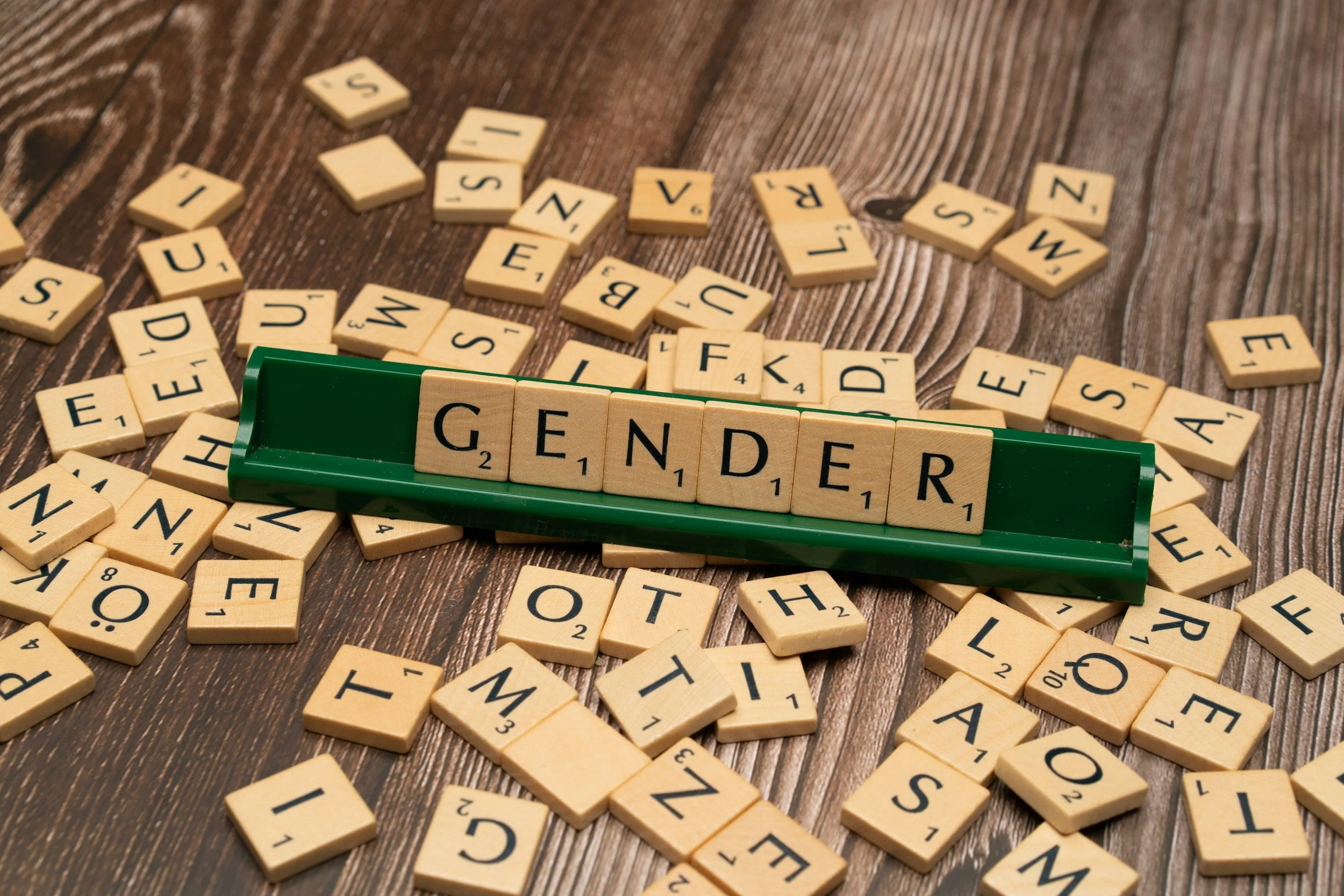Why Organisations Need Gender-Responsive Communication: Strategic Benefits That Drive Results
In today's rapidly evolving workplace and global landscape, organisations face a critical question: Are your communication strategies truly reaching and engaging everyone who matters to your success?
Gender-responsive and inclusive communication has moved beyond being a "nice-to-have" initiative. For forward-thinking organizations, it's becoming a strategic imperative - one that directly impacts decision-making quality, talent retention, stakeholder trust, and overall organisational effectiveness.
This guide explores why developing gender-responsive communication skills across your organisation matters, what transformations occur when you prioritise inclusive communication, and the tangible benefits your organisation can expect.
What Is Gender-Responsive Communication?
Gender-responsive and inclusive communication is an approach that recognises how gender, identity, power dynamics, and social context shape how people receive, process, and act on information. It goes beyond basic inclusion to actively ensure that communication strategies:
Acknowledge and address systemic inequalities that may shape who speaks and who listens
Use language and framing that resonate with diverse audiences
Create psychological safety for all team members to contribute fully
Challenge unconscious biases embedded in organisational messaging
Build trust across different stakeholder groups
Unlike generic "diversity and inclusion" messaging, gender-responsive communication is intentional, strategic, and rooted in evidence about how communication patterns either reinforce or challenge existing power structures.
The Communication Gap: What Organizations Are Missing
Many organizations communicate the way they always have - without asking critical questions about whose voices are heard, whose perspectives shape decisions, and whose needs their messaging actually serves.
Common blind spots include:
Internal Communications Gaps
Meeting dynamics where certain voices dominate while others stay silent
Decisions that appear to include diverse input but actually reflect narrow perspectives
Language and framing that inadvertently exclude or alienate team members
Informal communication networks that bypass some people while including others
External Communication Challenges
Messaging that resonates with some audiences but fails to reach others
Stakeholder engagement that feels one-directional rather than genuinely inclusive
Public messaging that claims inclusivity but doesn't match organisational practices
Missed opportunities to build trust with communities or populations the organisation serves
Leadership Communication Issues
Leaders unconsciously using language patterns that reinforce certain hierarchies
Difficulty navigating conversations around sensitive topics
Inconsistency between stated values and actual communication practices
These gaps aren't usually intentional - they're the result of communication approaches that haven't evolved to meet the complexity of modern organisations and diverse stakeholder needs.
The Transformation: What Changes When You Develop Gender-Responsive Communication Skills
1. Your Messages Have Greater Impact and Influence
When you understand how different audiences receive information, your communication becomes more persuasive and actionable. You move beyond "broadcasting" to genuine engagement.
What this looks like: A public health organisation's messaging about disease prevention reaches more community members because it's crafted in ways that address real concerns and use trusted messengers from within those communities. A corporate initiative gains traction because the internal communication acknowledges the real challenges people face rather than oversimplifying them.
2. Your Team Becomes More Collaborative and Innovative
Inclusive communication creates psychological safety - the environment where people feel comfortable taking interpersonal risks. When people aren't worried about saying the wrong thing or being judged, they contribute more fully.
What this looks like: Team meetings become richer. Quieter members speak up with valuable insights. Conflicts get addressed directly because people trust they'll be heard respectfully. Cross-functional collaboration improves because people from different backgrounds feel genuinely welcome to contribute.
3. Your Decisions Become More Robust and Better Informed
Teams that communicate inclusively access a wider range of perspectives and information. This directly improves decision quality.
What this looks like: A strategy developed by a diverse team with strong inclusive communication practices anticipates challenges that a homogeneous team would have missed. A policy change that affects different populations is actually vetted with the people it will impact, rather than imposed from above.
4. You Build Deeper Trust With Stakeholders
Whether they're communities you serve, donors, partners, employees, or the general public, stakeholders can sense authenticity. Inclusive communication demonstrates that you genuinely value diverse perspectives and are committed to being understood across difference.
What this looks like: Community members are more willing to engage with your organisation's work because they feel heard rather than spoken at. Partner organisations feel more confident in collaborating with you because they see your values and practices aligned. Employees become ambassadors for your organisation because they feel genuinely included.
5. Your Crisis Response Becomes More Effective
In moments of uncertainty, change, or crisis, inclusive communication is essential for maintaining trust and engagement. Organisations that have developed these skills navigate uncertainty with greater stakeholder buy-in.
What this looks like: During organisational change, people stay engaged rather than disengaging into the rumour mill because they understand what's happening and feel their concerns are being heard. During a public crisis, the organization's reputation is protected by the trust it's built through consistent, inclusive communication practices.
The Business Case: Key Benefits of Gender-Responsive Communication
Improved Talent Attraction and Retention
Organisations known for inclusive communication practices attract diverse talent and retain it longer. When people feel genuinely included rather than tokenized, their engagement and loyalty increase.
Enhanced Decision Quality
Research consistently shows that diverse teams with strong inclusive communication practices make better decisions and solve problems more effectively. You gain access to perspectives and information you'd otherwise miss.
Increased Organizational Agility
When communication patterns don't reinforce rigid hierarchies, your organisation can respond faster to change. Information flows more freely. Adaptation happens more quickly.
Stronger External Reputation and Stakeholder Trust
Organizations that communicate inclusively build deeper trust with the communities, partners, and populations they serve. This trust becomes a strategic asset, especially in uncertain times.
Better Crisis Management
When people trust your communication practices, they're more likely to believe you during crisis. When psychological safety is established, your team can adapt and respond more effectively under pressure.
Greater Impact on Your Mission
Ultimately, organizations that communicate inclusively are more effective at achieving their goals. Whether you're delivering public health services, driving social change, or running a business, inclusive communication amplifies your impact.
How to Develop Gender-Responsive Communication Skills in Your Organisation
Building gender-responsive communication capabilities isn't something that happens through a one-time training or memo. It requires:
Leadership Commitment
Leaders must model inclusive communication practices and demonstrate that these skills matter to organisational success.
Skill Development
Teams need practical training that goes beyond awareness to build actual communication skills - how to facilitate inclusive meetings, craft messages that resonate across difference, navigate difficult conversations.
Organisational Auditing
Examine your current communication patterns, policies, and practices. Where are the gaps? Where are certain voices systematically excluded?
Practice and Feedback
Like any skill, inclusive communication improves with practice. Create safe spaces for people to try new approaches and receive constructive feedback.
Accountability
Build inclusive communication into performance expectations and organisational metrics. What gets measured gets managed.
Who Should Develop These Skills?
Gender-responsive communication skills benefit organisations across sectors and sizes:
Public sector organisations serving diverse populations and navigating complex policy communication
NGOs and development organisations working on social change and community engagement
Healthcare organisations serving diverse patient populations and building trust
Corporations managing diverse workforces and stakeholder relationships
Educational institutions creating inclusive learning environments
International organizations navigating cross-cultural communication
Whether you're a nonprofit focused on social impact, a public agency delivering services, or a corporation managing complex stakeholder relationships, gender-responsive communication is increasingly essential.
Conclusion: The Strategic Imperative of Inclusive Communication
Gender-responsive and inclusive communication is not a compliance requirement or a nice gesture toward diversity. It's a strategic capability that directly impacts your organisation's effectiveness, adaptability, and impact.
Organisations that develop these skills see real changes: stronger teams, better decisions, more engaged stakeholders, and greater ability to navigate an increasingly complex world.
The question isn't whether your organisation needs to develop these capabilities - it's how quickly you can build them.
If you're ready to explore how gender-responsive communication could transform your organisation's effectiveness, I'd be happy to discuss what this could look like for your team.
Ready to strengthen your organisation's communication practices? Learn more about Gender-Responsive & Inclusive Communications training and workshops here.







